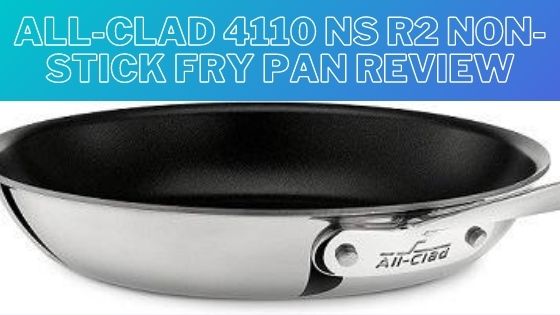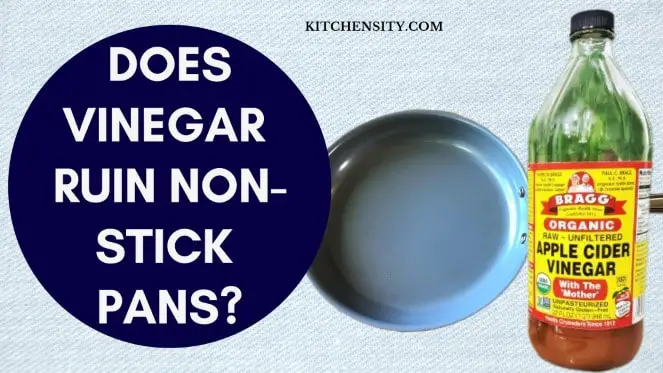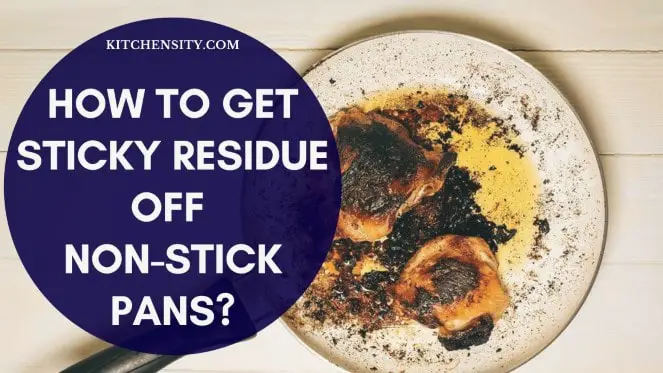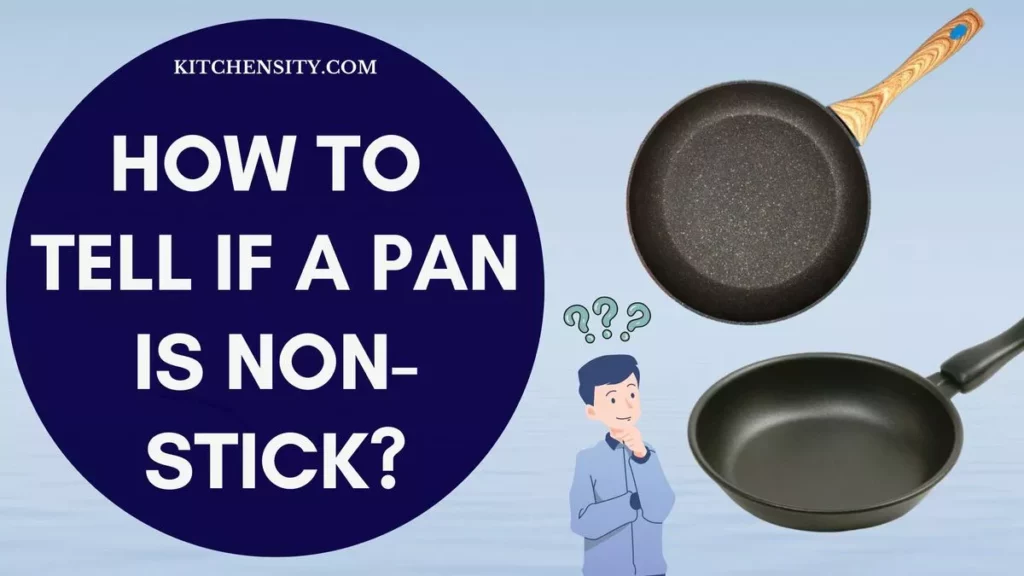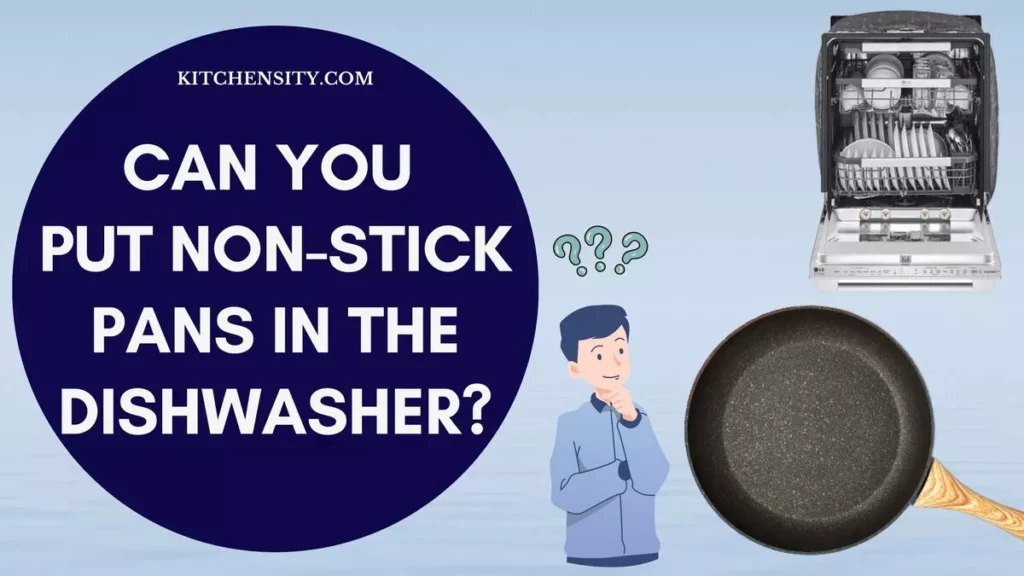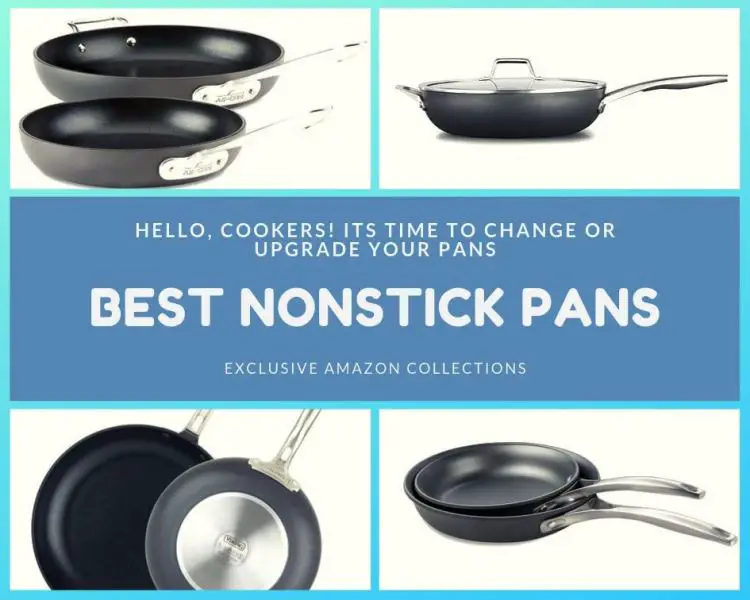Cooking with non-stick cookware has become a staple in many kitchens, offering convenience and ease. However, understanding the limitations and best practices for using non-stick cookware on high heat is crucial for maintaining its effectiveness and longevity.
Non-stick cookware is generally not recommended for use on high-heat settings. The non-stick coating can begin to deteriorate at temperatures above 500°F (260°C), potentially releasing toxic fumes and reducing the pan’s effectiveness.
Using non-stick cookware on high heat can also lead to food sticking to the surface and the pan becoming harder to clean. It’s best to use non-stick cookware on low to medium heat settings to ensure longevity and safety.
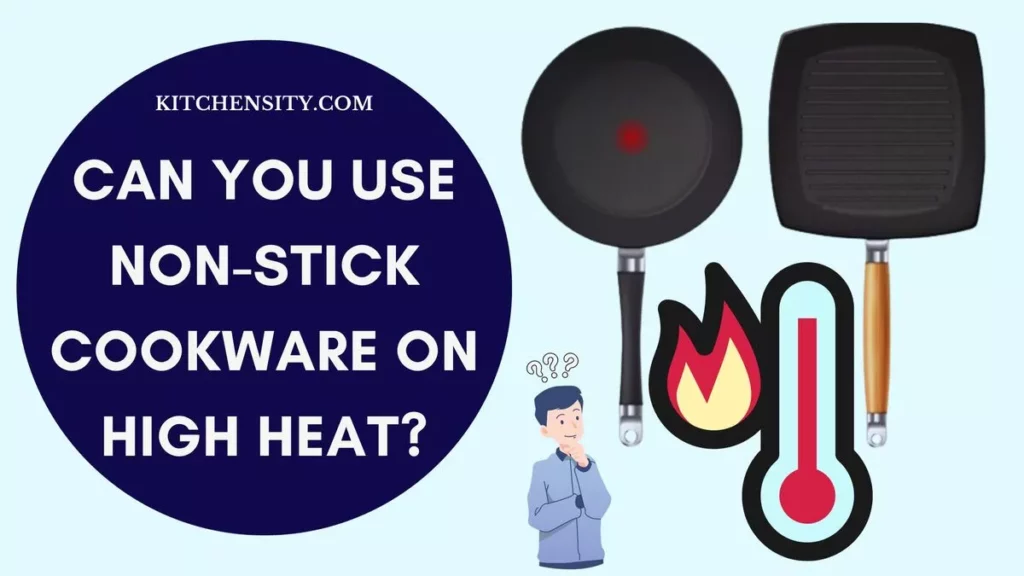
Non-stick cookware is not suitable for high-heat cooking due to several reasons. They are:
- Firstly, the coatings used in non-stick pans are not designed to withstand high temperatures. When exposed to high heat, these coatings can break down, releasing potentially harmful chemicals into the air and food.
- One of the most concerning chemicals released is perfluorooctanoic acid (PFOA), which can be harmful if inhaled, especially to birds and pets. Additionally, high heat can cause the non-stick coating to degrade, reducing its effectiveness and causing food to stick to the pan.
- Following the manufacturer’s guidelines regarding heat levels for non-stick cookware is crucial. These guidelines typically recommend low to medium-heat settings for optimal performance and safety. Using non-stick cookware at lower temperatures and avoiding overheating can help prevent damage to the coating.
- To further protect non-stick cookware, it’s advisable to use silicone, wood, or nylon utensils instead of metal ones, which can scratch and damage the non-stick surface.
Overall, using non-stick cookware at lower temperatures is best to maintain its non-stick properties and avoid potential health risks associated with high-heat cooking.
Also Read – Are Non-Stick Coatings Safe For Cooking?
Table of Contents
- 1 Does High Heat Ruin Non-Stick Pans?
- 2 Can You Overheat A Non-Stick Pan?
- 3 Heating Non-Stick Pan With Nothing In It.
- 4 Can You Use Nonstick Pans On Medium-High Heat?
- 5 At What Temperature Does Non-Stick Coating Melt?
- 6 Is It Bad To Leave An Empty Pan On A Hot Burner?
- 7 Best Practices For Using Non-Stick Cookware.
- 8 Final Thoughts: Can You Use Non-Stick Cookware On High Heat?
- 9 Frequently Asked Questions (FAQs)
- 9.1 Can I Use My Non-Stick Pan On High Heat If I Only Do It Occasionally?
- 9.2 How Do I Know If I’ve Overheated My Non-Stick Pan?
- 9.3 Can I Use Non-Stick Pans In The Oven At High Temperatures?
- 9.4 Are There Any Health Risks Associated With Using Non-Stick Cookware On High Heat?
- 9.5 Can I Still Use My Non-Stick Pan If I Accidentally Overheated It?
Does High Heat Ruin Non-Stick Pans?
Yes, high heat can ruin non-stick pans over time. Exposing non-stick pans to high temperatures can cause the non-stick coating to degrade, leading to reduced effectiveness and potential health risks from the release of harmful fumes.
The non-stick coating on pans can deteriorate at high temperatures, leading to loss of non-stick properties and increased food sticking. When subjected to high heat, non-stick coatings can release toxic fumes, such as perfluorooctanoic acid (PFOA), which can be harmful if inhaled. Prolonged exposure to high heat can shorten the lifespan of non-stick pans, requiring more frequent replacement.
Overheating non-stick cookware can also lead to safety concerns, such as food burning and sticking, as well as difficulty in cleaning the pan. To avoid ruining non-stick pans, it’s essential to use them within the recommended temperature range and avoid exposing them to excessive heat.
Also Read – Types Of Non-Stick Coatings
Can You Overheat A Non-Stick Pan?
No, you can’t overheat a non-stick pan because subjecting it to excessive heat can cause the non-stick coating to degrade, leading to reduced effectiveness and the potential release of harmful fumes. It’s important to use non-stick pans within their recommended temperature limits to avoid overheating and maintain their longevity.
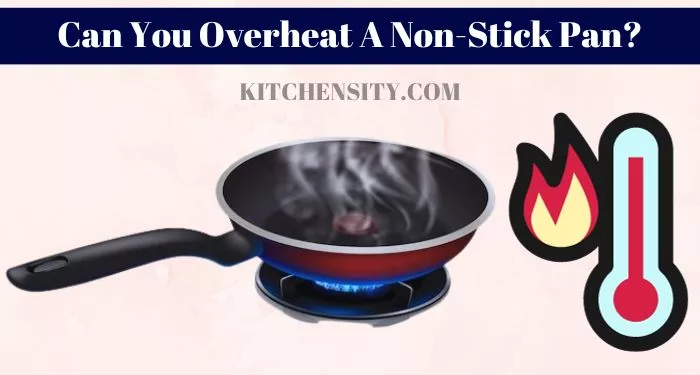
Also Read – How To Extend The Lifespan Of Non-Stick Pans?
Heating Non-Stick Pan With Nothing In It.
Heating a non-stick pan with nothing in it, also known as dry heating, is not recommended. Dry heating can cause the non-stick coating to degrade, reducing its effectiveness and potentially releasing harmful fumes. It’s best to always use non-stick pans with food or liquid to prevent damage to the coating and ensure safe cooking practices.
When a non-stick pan is heated without any food or liquid, the high temperatures can cause the release of toxic fumes from the non-stick coating. These fumes, such as perfluorooctanoic acid (PFOA), can be harmful if inhaled, particularly to birds and pets.
It can also cause the pan to warp or deform, especially if it’s heated on high heat for an extended period. Prolonged dry heating can reduce the lifespan of the non-stick pan, leading to the need for more frequent replacement.
To avoid these issues, it’s essential to always use a non-stick pan with some form of food or liquid to dissipate the heat and protect the non-stick coating.
Also Read – Things To Look For When Buying Non-Stick Cookware
Can You Use Nonstick Pans On Medium-High Heat?
Using non-stick pans on medium-high heat can be done, but it requires careful attention to several factors to prevent damage to the pan and ensure safe cooking.
Non-stick pans are designed to provide easy food release and convenient cleanup, but they have temperature limitations due to their non-stick coating. Most non-stick coatings are safe to use at temperatures up to around 500°F (260°C). However, temperatures beyond this range can cause the coating to degrade, potentially releasing harmful fumes and reducing the pan’s effectiveness.
When using non-stick pans on medium-high heat, it’s important to use them with caution, ensuring that you do not exceed the maximum recommended temperature for your specific non-stick pan. Keep in mind that different non-stick coatings may have varying heat tolerance levels, so it’s essential to refer to the manufacturer’s guidelines for specific temperature recommendations.
Preheat the pan gradually over medium heat rather than starting with high heat. This gradual increase in temperature helps prevent overheating and damage to the non-stick coating. Also, adjust your cooking techniques to accommodate medium-high heat. Use shorter cooking times and be attentive to prevent food from burning or sticking to the pan.
Also Read – Best Non-Stick Cookware Brands
At What Temperature Does Non-Stick Coating Melt?
Non-stick coatings, commonly made from polytetrafluoroethylene (PTFE), start to deteriorate and emit fumes at temperatures above approximately 500°F (260°C). At these temperatures, the coating can begin to break down, potentially releasing toxic particles and fumes.
It’s important to avoid exposing non-stick cookware to temperatures beyond this threshold to prevent damage to the coating and potential health risks. Maintaining cooking temperatures within the recommended range is crucial for the safe and effective use of non-stick cookware.
“Non-stick cookware should not be used on high heat settings, as the coatings can degrade and release harmful chemicals into the air. It’s best to use these pans on low to medium heat to ensure their longevity and safety.” – Chef John Smith, Culinary Institute of America.
Is It Bad To Leave An Empty Pan On A Hot Burner?
Yes, it is not advisable to leave an empty pan on a hot burner. Doing so can lead to overheating of the pan, which may cause damage to the non-stick coating and potentially release harmful fumes. Also, an empty pan on a hot burner poses a safety risk, as it can become very hot and increase the likelihood of accidental burns or fires.
To avoid these issues, it’s essential to follow some best practices when using cookware on a stovetop:
- Always ensure that there is food or liquid in the pan before placing it on a hot burner. This helps to distribute the heat evenly and prevents the pan from reaching excessively high temperatures.
- If you accidentally leave an empty pan on a hot burner, turn off the burner immediately and allow the pan to cool before removing it from the stovetop. This can help prevent damage to the pan and reduce the risk of accidents or injuries.
- When using non-stick pans, in particular, it’s crucial to adhere to the manufacturer’s guidelines regarding heat limits and proper use. Avoid exposing non-stick pans to high heat without food or liquid, as this can damage the coating and affect its performance.
Also Read – Do Chefs Use Non-Stick Cookware?
Best Practices For Using Non-Stick Cookware.
Some of the best practices for using non-stick cookware that can prolong the lifespan and ensure safe and effective cooking results.
- Use Low to Medium Heat: Avoid using high heat with non-stick cookware, as it can damage the non-stick coating. Opt for low to medium heat settings for safe and effective cooking.
- Preheat Carefully: When preheating a non-stick pan, do so gradually over low to medium heat to prevent overheating and damage to the coating.
- Use the Right Utensils: Use utensils made of silicone, wood, or nylon to avoid scratching the non-stick surface. Avoid metal utensils, which can damage the coating.
- Avoid Dry Heating: Always use non-stick cookware with food or liquid to prevent the release of harmful fumes and damage to the coating.
- Clean with Care: After use, clean non-stick cookware with mild soap and a soft sponge or cloth. Avoid abrasive cleaners or scrubbing pads that can damage the coating.
- Store Properly: Store non-stick cookware in a dry, cool place to prevent damage. Avoid stacking pans without protection to prevent scratching the non-stick surface.
Also Read – Can You Deep Fry In A Non-Stick Pan?
Final Thoughts: Can You Use Non-Stick Cookware On High Heat?
While non-stick cookware is convenient and easy to use, it is not designed for high-heat cooking. Subjecting non-stick pans to high temperatures can cause the coating to degrade, leading to diminished non-stick properties and potentially releasing harmful fumes. This can not only affect the lifespan of the cookware but also raise concerns about food safety.
To ensure the safe and effective use of non-stick cookware, it’s essential to adhere to the manufacturer’s guidelines regarding heat limits. Opt for low to medium heat settings when using non-stick pans and avoid dry heating, which can accelerate coating deterioration.
By using non-stick cookware responsibly within its recommended temperature range, you can extend its lifespan and maintain a safe cooking environment for yourself and your family.
Also Read – How To Get Sticky Residue Off Non-Stick Pans?
Frequently Asked Questions (FAQs)
Can I Use My Non-Stick Pan On High Heat If I Only Do It Occasionally?
While occasional use of high heat may not immediately damage your non-stick pan, it can contribute to gradual wear and tear of the coating, reducing its lifespan over time.
How Do I Know If I’ve Overheated My Non-Stick Pan?
Overheating can cause the non-stick coating to emit smoke or fumes, indicating that it has reached a temperature beyond its safe limit. If this happens, remove the pan from the heat source immediately and allow it to cool down.
Can I Use Non-Stick Pans In The Oven At High Temperatures?
Most non-stick pans are designed for stovetop use and have specific temperature limitations. Using them in the oven at high temperatures can damage the coating and should be avoided unless the manufacturer specifies otherwise.
Are There Any Health Risks Associated With Using Non-Stick Cookware On High Heat?
Yes, overheating non-stick cookware can release harmful fumes, such as PFOA, which can pose health risks if inhaled. It’s important to use non-stick cookware within its recommended temperature range to avoid these risks.
Can I Still Use My Non-Stick Pan If I Accidentally Overheated It?
If you’ve accidentally overheated your non-stick pan, it’s best to inspect it for any signs of damage, such as warping or discoloration. If the pan appears to be in good condition, you can continue using it, but be mindful of heat levels in the future to prevent further damage.
Katrina Smith is a seasoned expert with over 25 years of experience in all things related to cooking and the kitchen. As an avid cook and kitchen enthusiast, she is passionate about sharing her knowledge and expertise on cookware, kitchen appliances, kitchen tips, and kitchen staples.
Through her articles and reviews, Katrina aims to inspire and help others improve their cooking skills, experiment with different ingredients, and invest in quality cookware and appliances.

